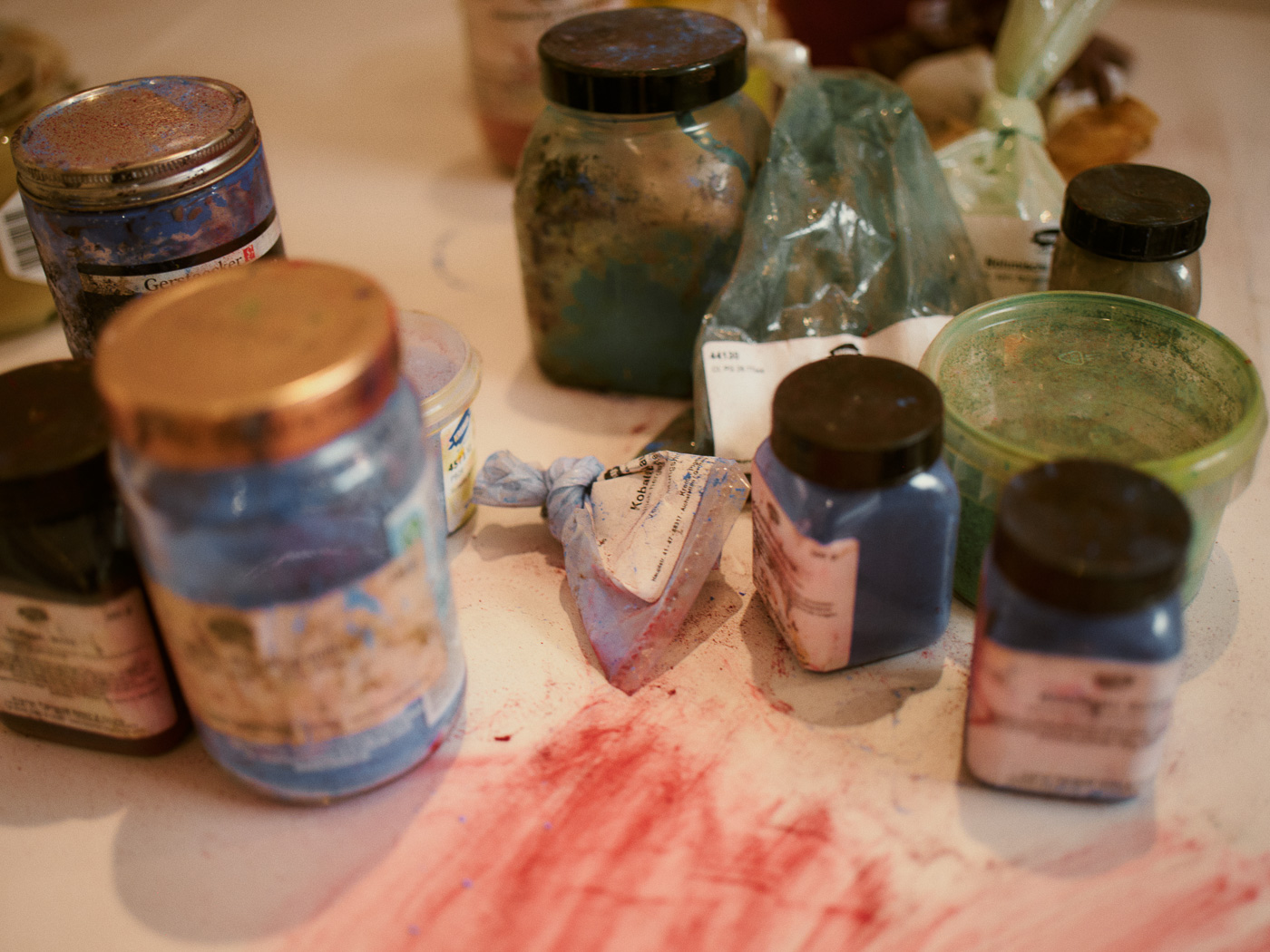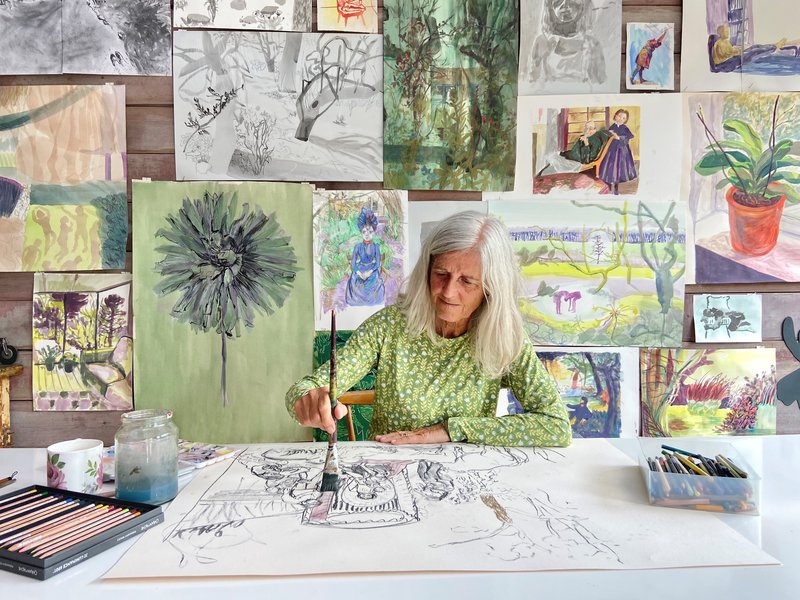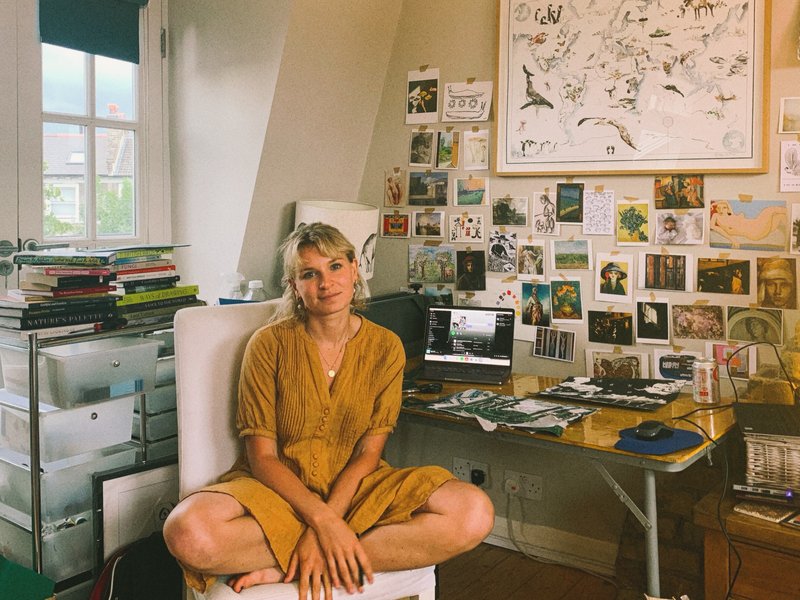
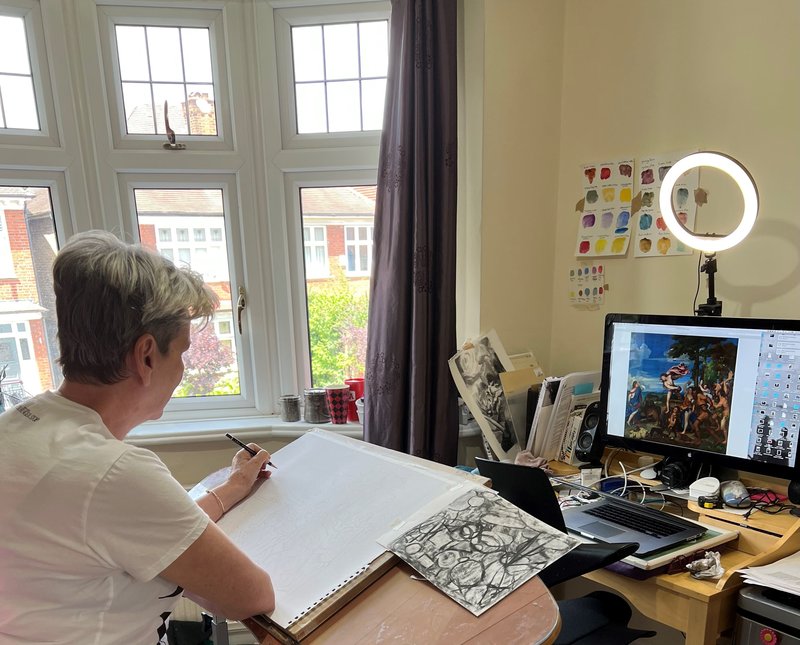
Our Online Drawing Development Year is a year-long online programme taught at postgraduate-level, designed to develop your drawing and studio practice. Students will benefit from live online drawing tuition and a structured critical dialogue with tutors, mentors, and peers over three terms.
Venetia Higgins, Cynthia Harrison-Orr, William Rowsell, Gail Theis, Alice tell us about their experiences below.
In a nutshell, can you describe your experience of online learning this year?
Cynthia: "It has honestly been a revelation."
Gail: "Working from my studio online has been wonderful."
Venetia: “I was slightly sceptical of online learning at first, but it has been incredible."
Alice: "It’s been really great being able to work from my studio."
It sounds like a very positive experience. What made you decide to apply for this course in the first place?
William: “I wanted to get new insights and techniques from other artists and tutors that could widen the scope and change the direction of my work. I’m planning to retire in a year or two and doing the course is a way of transitioning back in to being a full-time artist.”
A: “I studied medieval languages at university which I really enjoyed, but I always felt I’d made a mistake not pursuing art more seriously. Although I was drawing daily, I was at a stage where I wanted to develop my practice further than I could on my own.”
C: “My dream has always been for drawing itself to be my practice, to draw for myself instead of to a brief and to find out how far I can take it."
G: “Having spent six or more years in various art establishments where drawing was limited and sometimes non-existent in my practice, I felt I wanted to find my voice in drawing and painting again. Having been holed up alone in my studio for several years, I also craved interaction with other artists."
V: “Since university I’ve worked in the non-profit sector. After a period of ill health last year, I realised how much I had neglected my own creativity. I started to spend hours a day drawing directly from nature, examining the birds and berries in the garden, and collecting a little cabinet of curiosities. I taught myself lino-cut and started to experiment with new materials. Despite its lows, this period helped me re-discover my love of drawing and provided solace, meditation, joy, and a feeling of productivity that I was otherwise lacking. Something had been ignited in me and I decided to dedicate this year to developing my art practice, solely for me. I had previously completed a couple of short courses with the School over the years, so when I saw they were offering this course, I jumped at the opportunity.”
You learn as much from your peers as you do from the tutors. A big part of doing the course is to meet likeminded souls that we can share our work with and get ongoing feedback from, as we all know being an artist can be isolating.
William Rowsell
Student

Untitled
Cynthia Harrison-Orr
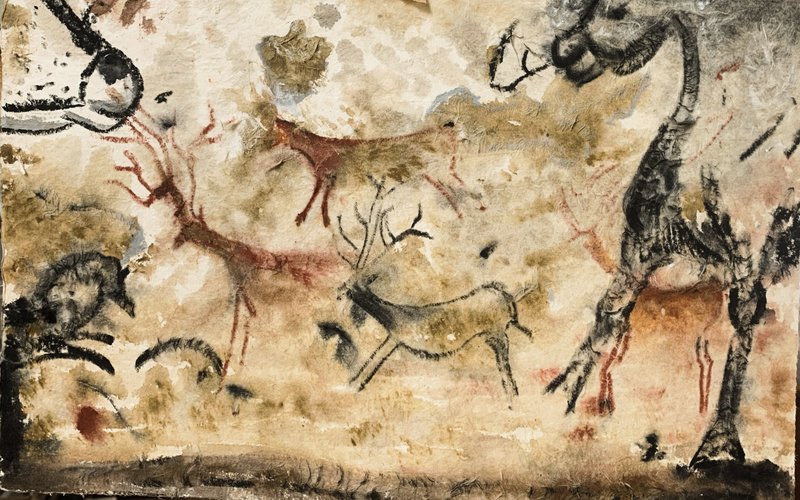
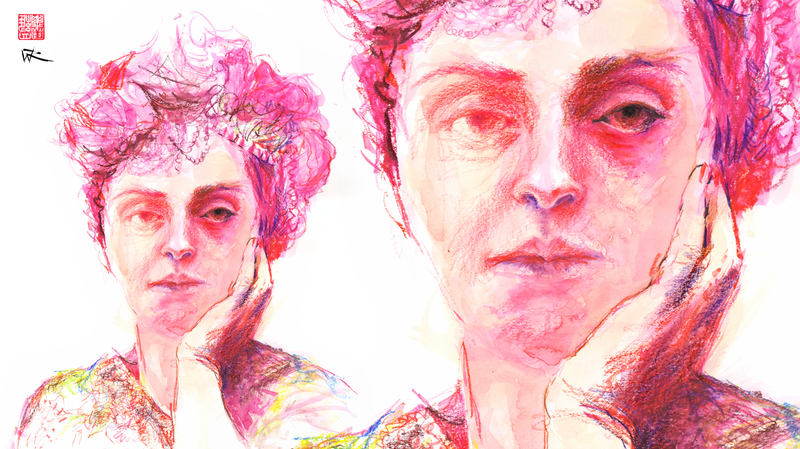
Is where you live a reason for joining this course?
A: “I moved out of London a few years ago to the countryside and there aren’t any courses local to me, so I’ve really valued being able to attend classes at the School no matter where I am in the world.”
C: "I live out in the sticks and have family commitments, so the online course has been a godsend."
W: "It’s also cheaper as no travel required!”
Can you describe what online learning is like?
C: “I am with the tutor and the rest of the class in the convenience of my own home, surrounded by all my materials. The classes are intense and my concentration is full on. At art school I did all my practical work at home in the evenings because I struggled to concentrate in the studio. Online I can work solidly through the day and at 5pm go downstairs with a day's worth of drawings in the bag.”
W: "It's important to get things in place to work and learn effectively. Good broadband is very important, and a large monitor that you can use to draw from is crucial, as you can’t draw and communicate from small screens.”
G: “Our internet has good bandwidth for Zoom. I have a small functioning studio room in the house so my commute is moments, not minutes or hours.”
Are there any courses in particular that have influenced or expanded your practice?
G: “Drawing: Observation and Imagination with Perienne Christian and David Gardner is a class unlike any I have experienced before. Totally out of my comfort zone, it really challenged my approach to composition using a combination of life drawing, collage, poetry and stories to develop a narrative in a unique way. Drawing from the National Gallery really consolidated my understanding of how a great painting works.”
C: “There have been some surprises such as Drawing and Theory, in particular drawing from the greats, they’ve got so much to teach us. Through Drawing Landscapes, Gardens and Natural Forms I discovered a huge subject in my garden, that could keep me enthralled forever.”
W: “ Drawing the Head: Expression and Colour with Thomas Newbolt has influenced how I approach drawings and what I am drawing about. I avoided doing self-portraits in the past and now find myself an interesting form of self-reflection. I also discovered mono printing, which I will be applying to my fashion illustration work.”
V: “I would say that the Online Drawing Development Year provides an unmatched range of modules to choose from.”
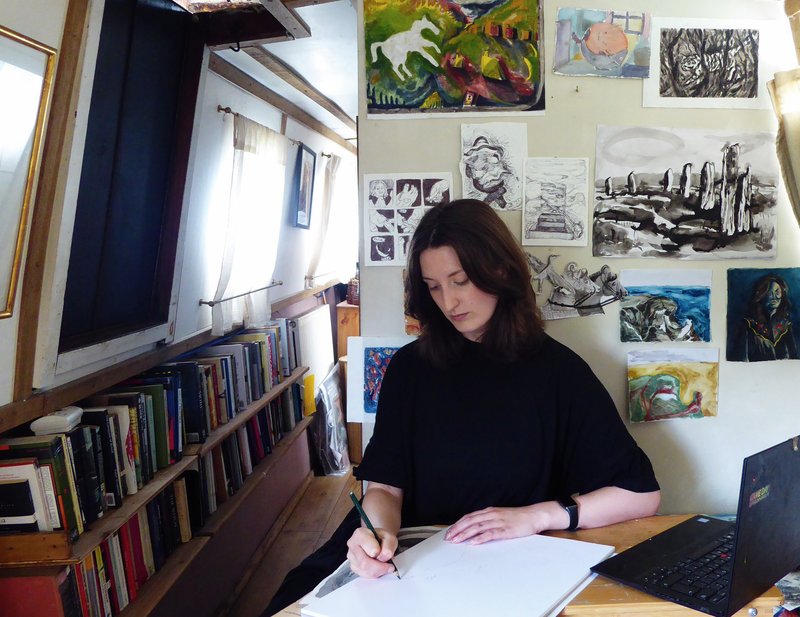
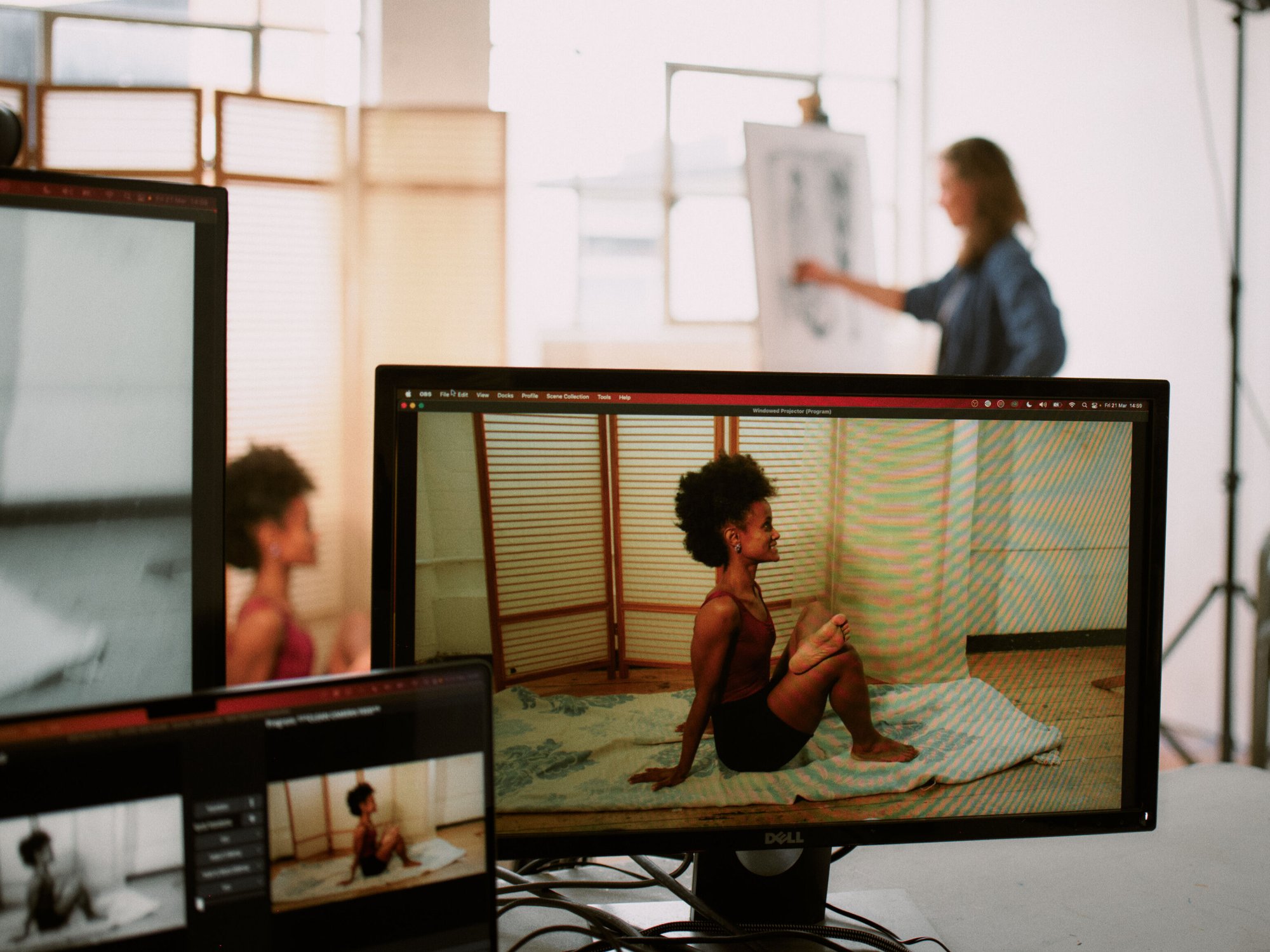
How have you found interacting with your student peers during the year?
C: “The group has a rare rapport through our shared passion for drawing which I haven’t experienced before in any other art school.”
V: “I’ve been surprised at how much of a community we've developed. We created a WhatsApp group and an Instagram account (@__studio.22) and both are used daily. We have [two] upcoming group exhibitions and art fairs and we are constantly sharing ideas, artists and exhibitions. Those that live in London have met up in person."
A: “To make up for the fact that we’re not all in the same room, we spend more time looking at each other’s work. In some ways it’s better being online - seeing other people’s art on Padlet has been really useful, and I’ve learnt so much from my classmates.”
W: “Yes the interaction with other classmates is of great value as you get a very broad range of life experience to draw from. You learn as much from your peers as you do from the tutors. A big part of doing the course is to meet likeminded souls that we can share our work with and get ongoing feedback from, as we all know being an artist can be isolating.”
G: “And breakout rooms are great for chatting more easily."
C: “Yes, by the second term I knew all of the group, and certain students very well, meeting up a few times in real life."
V: “Another key benefit of doing an online course is meeting fellow artists from all over the world. We have students from Greece, America, France, Belgium, Germany and many more. I’m sure there will be some international visits at some point!”
What kind of support have tutors given you?
C: "The tuition is excellent, it's been what I’ve been searching for since my school days: intense, intellectually stimulating, and fun. I’ve chosen some courses because the tutors really clicked with me and I learned so much from them. The feedback and critique at the end of the day is invaluable."
G: “The School has so many tutors, we are exposed to a wide variety of artists to learn from, far more than most colleges. They are engaging and motivated - it's been some of the best teaching I've had.”
V: “I couldn’t recommend the tutors more - they are all so genuinely interested in their student’s work and progression. The contact hours on the course are incredible.”
What have been the most positive outcomes from the course?
C: "The realisation that it's never too late to start drawing, the importance of a daily practice, to remake drawings until I’ve learned all there is to learn, to push myself and then push myself some more."
G: “With short, quick-fire drawings I've learnt to be less precious and I've found a new dynamism and expressiveness in my drawing because of this.”
A: “Having to explain my intentions to tutors and in the end of terms crits has allowed me to define a clearer direction for my art and feel more confident in my voice as an artist. Through Sarah Lightman’s Graphic Narratives course I’m working towards creating a zine with some of my classmates which is really exciting.”
V: “I've learnt the importance of playfulness. I now prioritise the process over the outcome when creating a piece of work. It has taken my drawing in new and exciting directions."
W: “I have found that investing more of myself emotionally in the work has led to a more engaging and powerful result. I have also learned to work in a more expressive way when drawing that has taken my work to another level with the viewer.”
C: "We are showing for the first time at Fronteer Independent Art Fair, Chester under our new group name Studio 22."
Want to learn more?
Subscribe for alerts, supportive resources, and key information about Online Drawing Development Year applications.
Designed by artists, for artists.
A year long intensive course can expand your drawing and studio practice.
